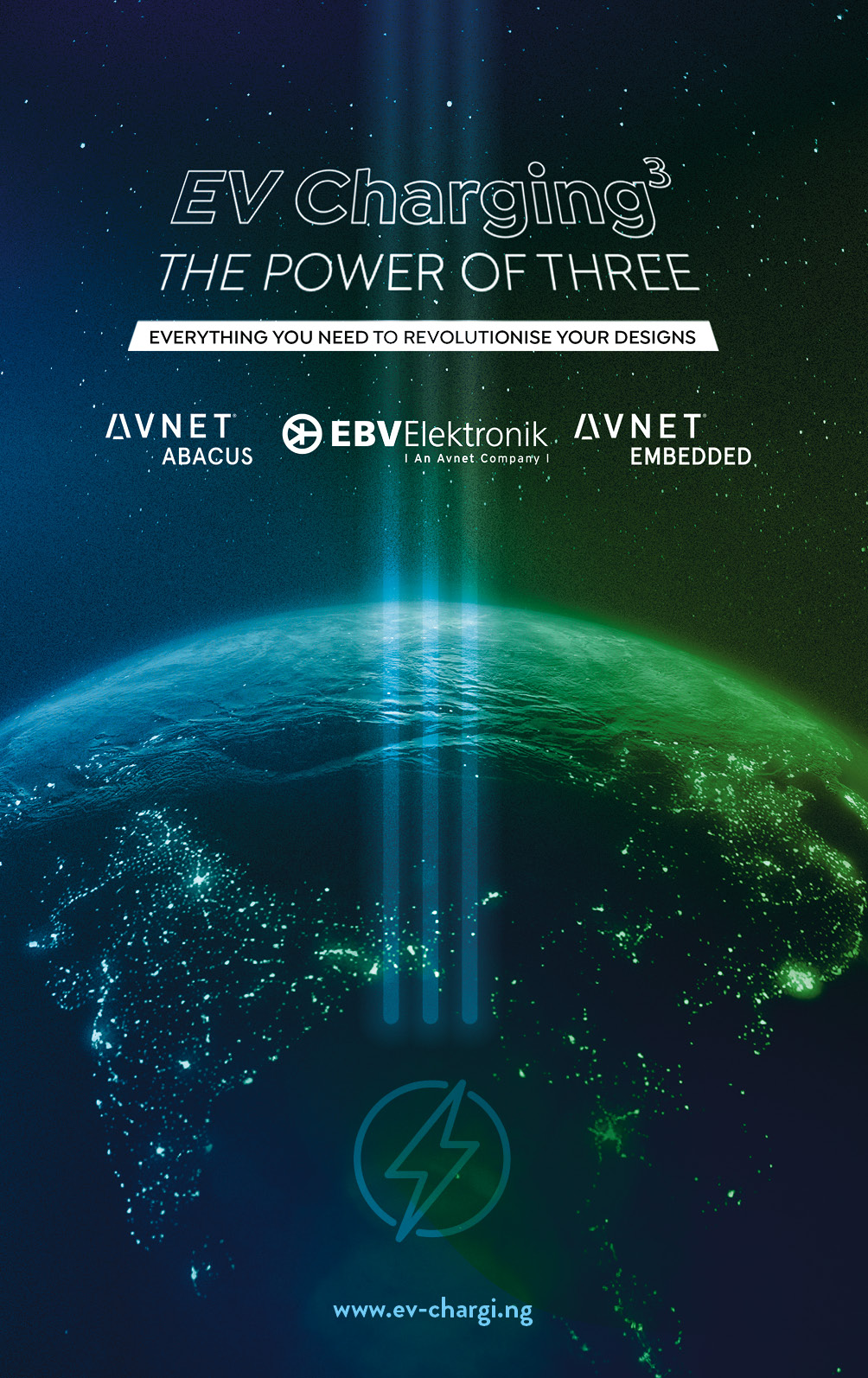Sarah Ghaemi, Director of Technical Development at Avnet Abacus, Bevan Braude, Business Development Manager at Avnet Embedded, and Andrej Orel, Director of Market Segment City and Infrastructure at EBV Elektronik, report on the cooperation of their three companies which could significantly reduce the development time for new charging solutions.
Electric vehicle charging infrastructure must be rapidly expanded for the e-mobility of tomorrow to be a success. Policy-makers and manufacturers must make sure that the number of charging facilities keeps up with the market’s exponentially growing demand.
However, designing a new charging solution is complex and a development timeframe of up to two years is not uncommon.
We spoke with three experts on how to make the design process easier: Sarah Ghaemi is Director of Technical Development at Avnet Abacus, Bevan Braude Business Development Manager at Avnet Embedded and finally Andrej Orel, Director of Market Segment City and Infrastructure at EBV Elektronik.
All three companies are part of the Avnet Group and have combined their expertise in order to support manufacturers during the development of charging solutions.
Sarah, what do you see as the most important market trends for charging technology at present?
Sarah Ghaemi: I see three fundamental areas: first there is the growth of charging capacity, as more and more charging stations with megawatt capacities are coming into operation. Secondly, wireless charging is emerging as a trend – what is especially exciting about this is the capacity to charge while the vehicle is moving. The third trend is the protocols that allow a vehicle to communicate with the electricity grid.
“Together, we can offer everything that is needed in a charging solution.“
Sarah Ghaemi
Bevan, what do you think are the most important technologies with regard to future charging infrastructure solutions?
Bevan Braude: Artificial intelligence – when integrated into the charging station, it enables a wealth of additional services. This creates added value not just for the operators but also for the end users. That includes, for example, aspects of security or remote monitoring combined with technologies like facial recognition, vehicle recognition and also current monitoring for recovering energy back into the system.
What do you see as the greatest challenge when it comes to expanding charging infrastructure fast enough to meet current demands?
Andrej Orel: The greatest challenge is the stability of the power grid, especially in relation to integrating renewable energy sources and decentralised systems. The second problem is the insufficient charging infrastructure in rural areas. And then a solution has to be found for everyone to be able to charge at home, even for those who don’t have a garage or their own parking space.
Charging station designers have to juggle various considerations. No wonder, then, that development can take up to two years. What options do manufacturers have to reduce the time to market?
Andrej Orel: There are several possibilities. The easiest, of course, is to use a white label option, but with that you are dependent on the original developer and you lose the momentum with regard to future upgrades. We recommend a modular or semi-modular approach where the customer can assemble a charging station out of various modules – for example, charging controller with software, embedded performance level, HMI with integrated payment and billing functions and so on and so forth. This can easily shave three to six months off the development time.
“Using a modular design approach can reduce development time by up to six months.”
Andrej Orel
In order to achieve that, EBV, Avnet Abacus and Avnet Embedded are working together under the motto “The Power of Three”. What exactly do you mean by this?
Bevan Braude: We all have different skills and capabilities within our eco-systems. Together we support manufacturers in bringing their products to market faster. That includes not only hardware but also software, IP, electromechanics and connection technology. Several heads are always better than one. Therefore, we can work together on new technologies and find solutions for some of the challenges we have already mentioned – from mains power, software issues and connectivity to the necessary certifications.
“Our approach can help manufacturers bring their charging solutions to market more quickly.”
Bevan Braude
What makes this cooperation so special?
Sarah Ghaemi: Together we are providing an end-to-end solution, so it’s not just about components and modules. Together we can also provide services for manufacturers such as hardware, firmware or software development. Our customers can store their charging solutions in the cloud via our platform and therefore use innovative cloud services. Together we provide everything that is needed for charging solutions – a one-stop shop.
This interview is an extract from the EBV podcast “Passion for Technology”. Here Sarah Ghaemi, Bevan Braude and Andrej Orel talk in detail about charging technology trends and explain the advantages of the “Power of Three” campaign from Avnet Abacus, Avnet Embedded and EBV Elektronik for charging technology manufacturers.



